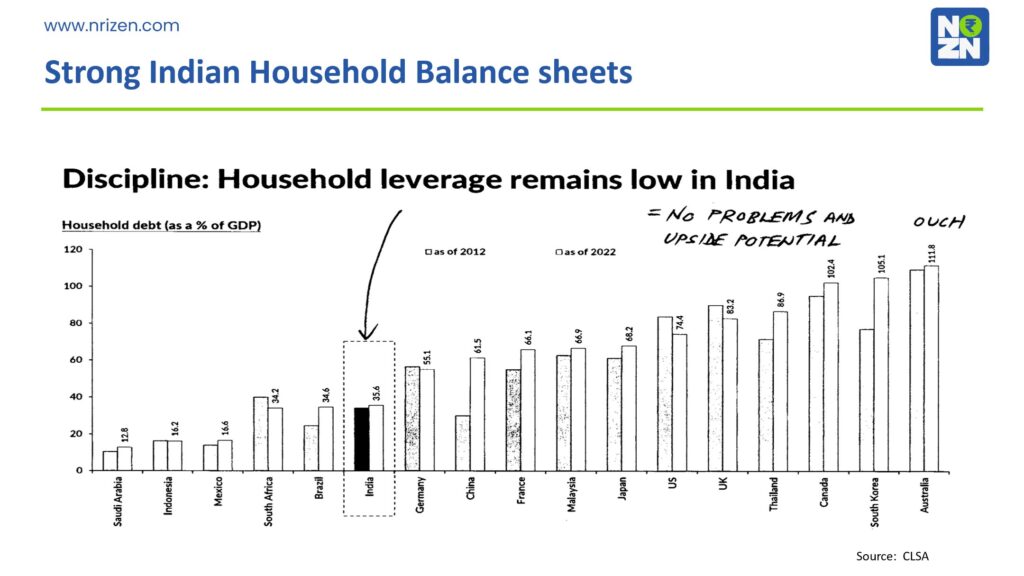An interesting analysis of household debt as a percentage of GDP shows how different countries have handled debt over the last ten years. When we look at the numbers from 2012 to 2022, the changes in household debt tell us a lot about economic trends and stability. This comparison reveals that while some countries have seen significant increases in debt, others, like India, have maintained a much more stable approach.

India’s Household Debt: Slow and Steady Growth
India stands out in this global comparison for its cautious approach to household debt. Over the past decade, India’s household debt as a percentage of GDP has barely increased. This shows that Indian households have been relatively conservative when it comes to borrowing. This slow growth in debt is a good sign for the country’s economic stability, as it means that households are not overburdened with loans and have room for future growth.
The Surge in Household Debt in Other Countries
In contrast to India, several other countries have seen a sharp rise in household debt. China, for example, has more than doubled its household debt as a percentage of GDP over the last ten years. This rapid increase could be a sign of potential problems for China’s economy, as high debt levels can lead to financial strain on households. Brazil, Thailand, and Canada have also seen significant increases in household debt. Canada, in particular, has a household debt that is almost 100% of its GDP, which is a cause for concern.
The Risks of High Household Debt
When household debt rises too quickly, it can lead to major issues in the long run. High debt levels can make households vulnerable to economic downturns. If the economy slows down, people may struggle to repay their loans, leading to defaults and financial crises. This is especially true in countries like China, where household debt has grown at such a fast pace. While borrowing can stimulate the economy, doing so recklessly can create a fragile financial system.
The Stable Economies: India, Indonesia, and Saudi Arabia
Alongside India, countries like Indonesia and Saudi Arabia have also maintained low levels of household debt compared to their GDP. This suggests that these economies are in a stable position, with plenty of room for growth in household borrowing. The low debt levels in these countries provide a solid foundation for future economic expansion without the immediate risk of financial instability. It also means that as their economies grow, there is room for households to take on more debt in a controlled manner.
Disclaimers and disclosures : https://tinyurl.com/2763eyaz
If you have any questions, please write to support@weekendinvesting.com













